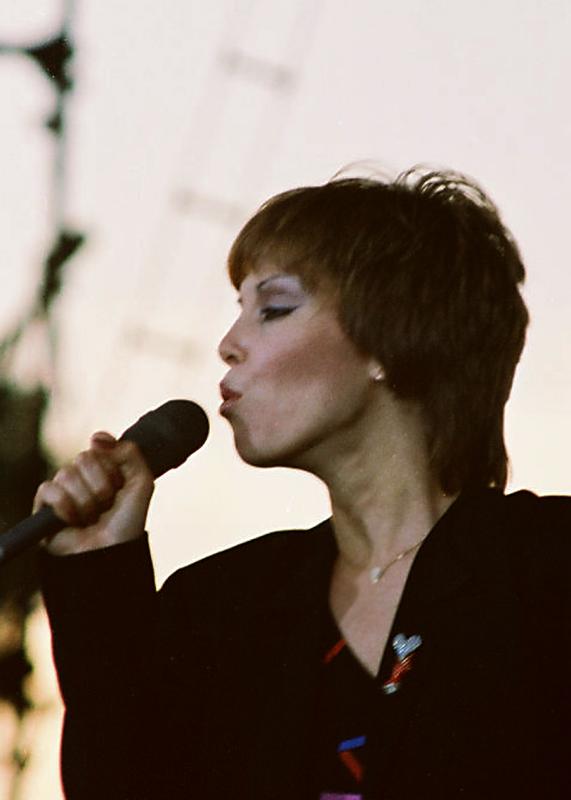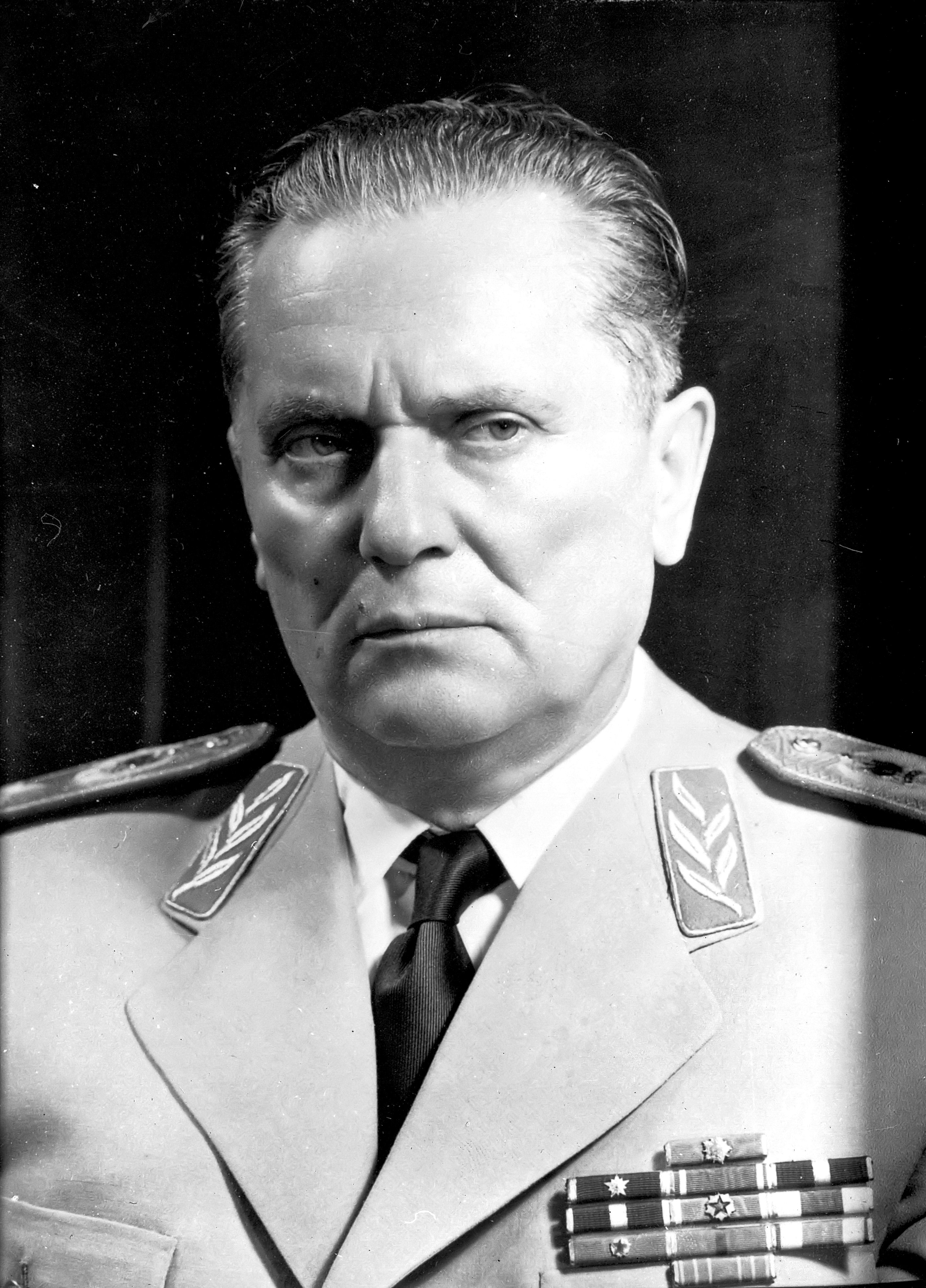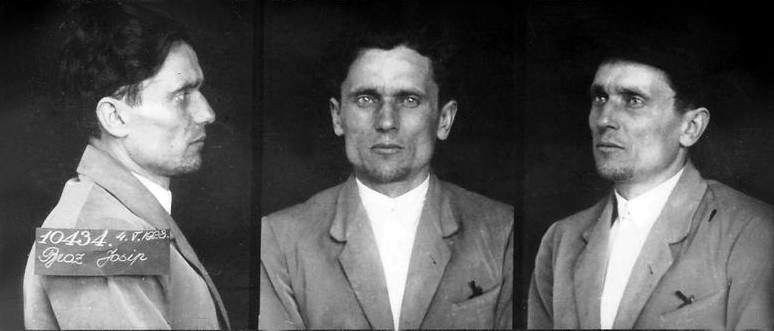|
President Of Yugoslavia
The president of the Socialist Federal Republic of Yugoslavia was the head of state of that country from 14 January 1953 to 4 May 1980. Josip Broz Tito was the only person to occupy the office. Tito was also concurrently President of the League of Communists of Yugoslavia. Tito was eventually declared president for life and with his death in 1980 the office was discontinued and the new office of President of the Presidency of Yugoslavia took its place. The 1946 Yugoslav Constitution, 1946 constitution defined the government of Yugoslavia headed by a president (commonly known as prime minister) as the highest administrative authority in the country. Tito served as Prime Minister during the entire period up to adoption of the 1953 Yugoslav Constitution, 1953 constitution. This law proclaimed the country to be a socialist republic and removed all previous references to a government, ministries, etc. Instead it defined the office of president and the Federal Executive Council (Yugos ... [...More Info...] [...Related Items...] OR: [Wikipedia] [Google] [Baidu] |
List Of Yugoslav Flags
This is a list of flags that were used by and in Yugoslavia. National and civil flags Proposed flags Military flags Army flags Air force flags Naval ensigns Naval jacks Defence Ministry Flags Rank flags Government flags Governmental Monarchical Republic flags Socialist Republic of Bosnia and Herzegovina Proposed flags Socialist Republic of Croatia Socialist Republic of Macedonia Socialist Republic of Montenegro Socialist Republic of Serbia Socialist Republic of Slovenia Banate flags Ethnic communities Although the Socialist Autonomous Province of Kosovo had no official flag, from 1969 the Kosovar Albanian population was able to use a variant of the Flag of Albania, Albanian flag as its ethnic flag. As of 1985 a similar right applied to all national minorities, provided the flag was charged with the Yugoslav red star. References External links Flags of Yugoslavia (at Flags & Arms of the Modern Era) {{Lists of flags Flags of Yugos ... [...More Info...] [...Related Items...] OR: [Wikipedia] [Google] [Baidu] |
Yugoslav People's Army
The Yugoslav People's Army (JNA/; Macedonian language, Macedonian, Montenegrin language, Montenegrin and sr-Cyrl-Latn, Југословенска народна армија, Jugoslovenska narodna armija; Croatian language, Croatian and ; , JLA), also called the Yugoslav National Army, was the military of the Socialist Federal Republic of Yugoslavia and its antecedents from 1945 to 1992. Origins The origins of the JNA started during the Yugoslav Partisans of World War II. As a predecessor of the JNA, the People's Liberation Army of Yugoslavia (NOVJ) was formed as a part of the Resistance during World War II, anti-fascist World War II in Yugoslavia, People's Liberation War of Yugoslavia in the Bosnian town of Rudo on 22 December 1941. After the Yugoslav Partisans liberated the country from the Axis Powers, that date was officially celebrated as the "Day of the Army" in the Socialist Federal Republic of Yugoslavia (SFR Yugoslavia). In March 1945, the NOVJ was renamed the "Yugo ... [...More Info...] [...Related Items...] OR: [Wikipedia] [Google] [Baidu] |
1980 Disestablishments In Yugoslavia
__NOTOC__ Year 198 (CXCVIII) was a common year starting on Sunday of the Julian calendar. At the time, it was known as the Year of the Consulship of Sergius and Gallus (or, less frequently, year 951 ''Ab urbe condita''). The denomination 198 for this year has been used since the early medieval period, when the Anno Domini calendar era became the prevalent method in Europe for naming years. Events By place Roman Empire *January 28 **Publius Septimius Geta, son of Septimius Severus, receives the title of Caesar. **Caracalla, son of Septimius Severus, is given the title of Augustus. China *Winter – Battle of Xiapi: The allied armies led by Cao Cao and Liu Bei defeat Lü Bu; afterward Cao Cao has him executed. By topic Religion * Marcus I succeeds Olympianus as Patriarch of Constantinople (until 211). Births * Lu Kai, Chinese official and general (d. 269) * Quan Cong, Chinese general and advisor (d. 249) Deaths * Li Jue, Chinese warlord and regent * ... [...More Info...] [...Related Items...] OR: [Wikipedia] [Google] [Baidu] |
1953 Establishments In Yugoslavia
Events January * January 6 – The Asian Socialist Conference opens in Rangoon, Burma. * January 12 – Estonian émigrés found a Estonian government-in-exile, government-in-exile in Oslo. * January 14 ** Marshal Josip Broz Tito is chosen President of Socialist Federal Republic of Yugoslavia, Yugoslavia. ** The Central Intelligence Agency, CIA-sponsored Robertson Panel first meets to discuss the Unidentified flying object, UFO phenomenon. * January 15 ** Georg Dertinger, foreign minister of East Germany, is arrested for spying. ** British security forces in West Germany arrest 7 members of the Naumann Circle, a clandestine Neo-Nazi organization. * January 19 – 71.1% of all television sets in the United States are tuned into ''I Love Lucy'', to watch Lucy give birth to Little Ricky, which is more people than those who tune into Dwight Eisenhower's inauguration the next day. This record is never broken. * January 24 ** Mau Mau Uprising: Rebels in Kenya kill th ... [...More Info...] [...Related Items...] OR: [Wikipedia] [Google] [Baidu] |
Heads Of State Of Yugoslavia
This article lists the heads of state of Yugoslavia from the creation of the Kingdom of Serbs, Croats and Slovenes (Kingdom of Yugoslavia) in 1918 until the breakup of the Socialist Federal Republic of Yugoslavia in 1992. The Kingdom of Yugoslavia was a hereditary monarchy ruled by the House of Karađorđević from 1918 until World War II. After the war, SFR Yugoslavia was headed first by Ivan Ribar, the President of the Presidency of the National Assembly (the parliamentary speaker), and then by President Josip Broz Tito from 1953 up until his death in 1980. Afterwards, the Presidency of Yugoslavia assumed the role of a collective head of state, with the title of President of the Presidency of Yugoslavia rotating among the representatives of the republics and autonomous provinces that composed the Presidency. However, until 1990 the position of leader of the League of Communists of Yugoslavia was usually the most powerful position, most often coinciding with the President of th ... [...More Info...] [...Related Items...] OR: [Wikipedia] [Google] [Baidu] |
Government Of Yugoslavia
The Federal Executive Council (FEC, Serbo-Croatian, ''Savezno izvršno vijeće (SIV)'', Савезно извршно веће (СИВ)) was the executive body of the Socialist Federal Republic of Yugoslavia (SFRY) responsible for state affairs and for supervising the implementation of laws. It consisted of up to 15 members elected by the Federal Assembly for a four-year term and the presidents of executive councils of republics and provinces. The Federal Executive Council played an important role in the Government of the SFRY from its creation in 1953 until the breakup of Yugoslavia in 1992. Structure The FEC was led by a President (also called Prime Minister, especially outside Yugoslavia) and two vice presidents (deputy prime ministers), who were elected by the SFRY Federal Assembly on the nomination of the President. Council members (also called secretariats) were elected to equally represent the six republics of Yugoslavia, as well as the two autonomous regions in Serbia, ... [...More Info...] [...Related Items...] OR: [Wikipedia] [Google] [Baidu] |
Politics Of Yugoslavia
, common_name = Yugoslavia , life_span = 1918–19921941–1945: World War II in Yugoslavia#Axis invasion and dismemberment of Yugoslavia, Axis occupation , p1 = Kingdom of SerbiaSerbia , flag_p1 = State Flag of Serbia (1882-1918).svg , p2 = Kingdom of MontenegroMontenegro , flag_p2 = Flag of the Kingdom of Montenegro.svg , p3 = State of Slovenes, Croats and Serbs , flag_p3 = Flag of the State of Slovenes, Croats and Serbs.svg , p4 = Austria-Hungary , flag_p4 = Flag of Austria-Hungary (1867-1918).svg , p7 = Free State of FiumeFiume , flag_p7 = Flag of the Free State of Fiume.svg , s1 = Croatia , flag_s1 = Flag of Croatia (1990).svg , s2 = Slovenia , flag_s2 = Flag of Slovenia.svg , s3 ... [...More Info...] [...Related Items...] OR: [Wikipedia] [Google] [Baidu] |
Death And State Funeral Of Josip Broz Tito
Josip Broz Tito, President of Yugoslavia and leader of the League of Communists of Yugoslavia, died on 4 May 1980 following a prolonged illness. His state funeral was held four days later on 8 May, drawing a significant amount of statesmen from Western, Eastern and Non-Aligned countries across the world. The attendees included four kings, six princes, 22 prime ministers, 31 presidents, and 47 ministers of foreign affairs. In total, 128 countries out of the 154 UN members at the time were represented. Also present were delegates from seven multilateral organizations, six movements and forty political parties. Tito had become increasingly ill throughout 1979. On 7 January and again on 11 January 1980, Tito was admitted to the University Medical Centre in Ljubljana, the capital city of SR Slovenia, with circulation problems in his legs. His left leg was amputated soon afterwards due to arterial blockages, and he died of gangrene at the Medical Centre Ljubljana on 4&nb ... [...More Info...] [...Related Items...] OR: [Wikipedia] [Google] [Baidu] |
Tito Signature
Josip Broz ( sh-Cyrl, Јосип Броз, ; 7 May 1892 – 4 May 1980), commonly known as Tito ( ; , ), was a Yugoslav communist revolutionary and politician who served in various positions of national leadership from 1943 until his death in 1980. During World War II, he led the Yugoslav Partisans, often regarded as the most effective resistance movement in German-occupied Europe. Following Yugoslavia's liberation in 1945, he served as its prime minister from 1945 to 1963, and president from 1953 until his death in 1980. The political ideology and policies promulgated by Tito are known as Titoism. Tito was born to a Croat father and a Slovene mother in Kumrovec in what was then Austria-Hungary. Drafted into military service, he distinguished himself, becoming the youngest sergeant major in the Austro-Hungarian Army of that time. After being seriously wounded and captured by the Russians during World War I, he was sent to a work camp in the Ural Mountains. Tito participated ... [...More Info...] [...Related Items...] OR: [Wikipedia] [Google] [Baidu] |
Marshal Of Yugoslavia
Marshal of Yugoslavia was the highest military distinction, rather than a military rank of the Yugoslav People's Army. In military hierarchy it was equivalent to Marshal#Military, Marshal (field marshal), and, simultaneously, a Socialist Federal Republic of Yugoslavia, Yugoslav honorific title. History of the rank The only person to ever hold the title of "Marshal of Yugoslavia" was Josip Broz Tito, with the term "Marshal" becoming synonymous with his name in Yugoslavia. He received it at the Anti-Fascist Council for the National Liberation of Yugoslavia#Second session, second session of Anti-Fascist Council for the National Liberation of Yugoslavia, AVNOJ in the Bosnia and Herzegovina, Bosnian town of Jajce on 30 November 1943, and held it until Death and state funeral of Josip Broz Tito, his death on 4 May 1980. Tito had more than 70 different marshal uniforms. Personnel assigned to the Marshal of Yugoslavia Adjutants Chiefs of the Cabinet Gallery File:Yugoslavia-Army-OF ... [...More Info...] [...Related Items...] OR: [Wikipedia] [Google] [Baidu] |
League Of Communists Of Yugoslavia
The League of Communists of Yugoslavia, known until 1952 as the Communist Party of Yugoslavia, was the founding and ruling party of SFR Yugoslavia. It was formed in 1919 as the main communist opposition party in the Kingdom of Serbs, Croats and Slovenes and after its initial successes in the elections, it was proscribed by the royal government and was at times harshly and violently suppressed. It remained an illegal underground group until World War II when, after the invasion of Yugoslavia in 1941, the military arm of the party, the Yugoslav Partisans, became embroiled in a bloody civil war and defeated the Axis powers and their local auxiliaries. After the liberation from foreign occupation in 1945, the party consolidated its power and established a one-party state, which existed in that form of government until 1990, a year prior to the start of the Yugoslav Wars and breakup of Yugoslavia. The party, which was led by Josip Broz Tito from 1937 to 1980, was the first commun ... [...More Info...] [...Related Items...] OR: [Wikipedia] [Google] [Baidu] |
Lazar Koliševski
Lazar Koliševski ( ; 12 February 1914 – 6 July 2000) was a Macedonians (ethnic group), Macedonian Socialist Federal Republic of Yugoslavia, Yugoslav Communism, communist political leader in the Socialist Republic of Macedonia and briefly in the Socialist Federal Republic of Yugoslavia. He was closely allied with Josip Broz Tito. Early years Koliševski was born on 12 February 1914 in Sveti Nikole, Kingdom of Serbia, into a poor family. His mother was an Aromanians, Aromanian, while his father was Slavic speakers in Ottoman Macedonia, Slavic. According to Kosta Tsarnushanov, a Macedonian Youth Secret Revolutionary Organization, MMTRO member and historian, his father was a ''Serbomans, Serboman''. In 1915, during the World War I, First World War, the region of Macedonia was occupied by the Kingdom of Bulgaria. His father was mobilized on the Macedonian front, Salonica front, and during the war, both of Koliševski's parents died. Once left an orphan, he was taken by his aunts and ... [...More Info...] [...Related Items...] OR: [Wikipedia] [Google] [Baidu] |



